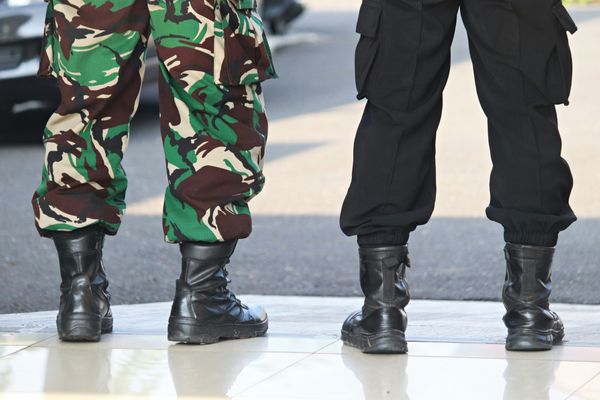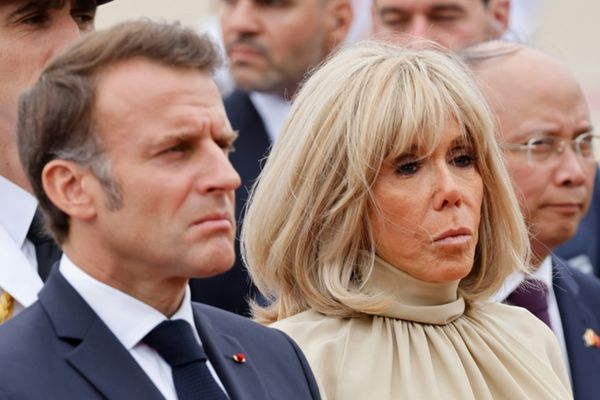Indian think-tanks, analysts, writers and the media dub Myanmar’s Spring Revolution as militancy and militant action against Myanmar’s military, but there are many developments which we in India should take into account.
In 2022, the parallel governance system set up by the National Unity Consultative Council (a decision-making political alliance of pro-democracy forces and ethnic armed organisations established with more than 400 diverse representatives on March 8, 2021) organised an online “People’s Assembly convened in January 2022”, which adopted the Federal Democracy Charter (FDC) declared on March 31, 2021 by the Committee Representing Pyidaungsu Hluttaw (CRPH), thereby leading to the formation of the National Unity Government (NUG) and in shaping “Myanmar’s Spring Revolution”.
Charter, a political guideline
Events set in motion after the formation of the NUG, of having a historical FDC which underwent multiple processes of being drafted and approved by various representatives of the elected lawmakers, political parties, civil disobedience movement, protest/strike leaders, civil society organisations, women, gender and youth organisations/representatives and other political stakeholders, are a political milestone in Myanmar’s post-colonial independence, nation formation process, with recognition of equality for diverse ethnic groups. The charter in itself is not a legal document and still needs to address many constitutional checks and balances. Yet, it has laid the ground for some negotiated and consensual constitutional framework, serving as a political guideline for any constitutional development in the future of the country.
Editorial | Changing tide: On democracy and Myanmar’s civil war
Even with the existing shortcomings, the charter’s consensual adoption cannot be questioned as a frivolous political exercise. It is the strongest reflection of the will of all the people of Myanmar, and their inclusive political aspirations for a federal democratic structure addressing basic human rights, non-discrimination, minority rights, women and gender equality.
The post-coup political developments in Myanmar need to be understood as a historical and a fantastic collective work of deliberations, negotiation and political consensus undertaken by the diverse pro-democratic groups in Myanmar.
Arriving at a pivotal political moment in the country’s history, the diverse ethnic groups involved in the pro-democracy movement have proven that peace in Myanmar is possible and achievable without the political involvement of the military.
NUG formation is a political feat
The composition of the NUG should not be seen by Indians to be just another NLD-led body (which many continue to identify it as so). One needs to have a good look at the composition of the NUG which has representatives from the National League for Democracy, Kachin Political Interim Coordination Team, Chin National Front/Interim Chin National Consultative Council, New Mon State Party, Shan Nationalities League for Democracy, Karenni National People’s Liberation Front, Ta’ang National Party, Kayan New Land Party, All Burma Federation of Trade Unions, and many individual representatives. It is a political feat while the country is still having an armed revolution and an active civil disobedience movement, and is also working on interim arrangements on a consensual basis (“a multi-ethnic governance structure”).
Myanmar’s military has been hit by the sliding morale of and defections in the armed forces, and also hammered by coordinated attacks across the socio-political landscape on every front, politically and militarily, even when the Spring Revolution is fought in a very asymmetrical manner. An article in November in the Irrawaddy (independent Myanmar media) said: “Operation 1027 is creating a new political template for Myanmar’s future.” The ongoing increased coordinated armed offences against the military have only proven that the decades-old notion of the Myanmar military being essential for the future of the country has been proven false.
In another article in the Irrawaddy in January 2023, “Reviewing Myanmar’s Spring Revolution, 2 Years on From the Coup”, Banyar Aung emphasised how Myanmar’s military has always used the constitution and law as a tool for itself and for its own interests. The military went on to claim widespread fraud in the general elections in 2020, and used the pretext of a threat to sovereignty and territorial integrity to stage a failed coup, while seizing power by force. In a few days, the whole country erupted in protest against the military coup, leading to widespread civil disobedience movement and a violent uprising once the military started its violent pogrom against its own people including Bamar people, irrespective of their ethnic background.
Pushing back against the military
The ongoing ensemble of coordinated and collective efforts by the revolutionary pro-democracy forces is pushing the military out of many ethnic- and Bamar-dominated areas. Stakeholders have shown an unprecedented and unwavering strong politico-public commitment to fight against the military and build a long-lasting politically sound, federal and democratic union — something which was not seen during the 8888 revolution.
Editorial | War in Myanmar: On the junta and restoring democracy
The process of Myanmar’s actual unification has just begun. The collective effort of the NUG is set to ensure that it completes the incomplete process of nation and state building left after colonial rule and shattered after the military took over the country for seven decades, even after the 8888 revolution. Public fury has been unleashed since February 1, 2021, on an unprecedented scale.
“The revolution is here to stay, and we will not rest until the military is removed,” my Burmese friends insist.
Sanjay Valentine Gathia is Founder and Director of Borders and Broader Conversations Initiative which organises P2P conversations and networking between India-Myanmar-Thailand (IMT), with a focus on India’s Act East Policy and India’s Neighbourhood Policy







